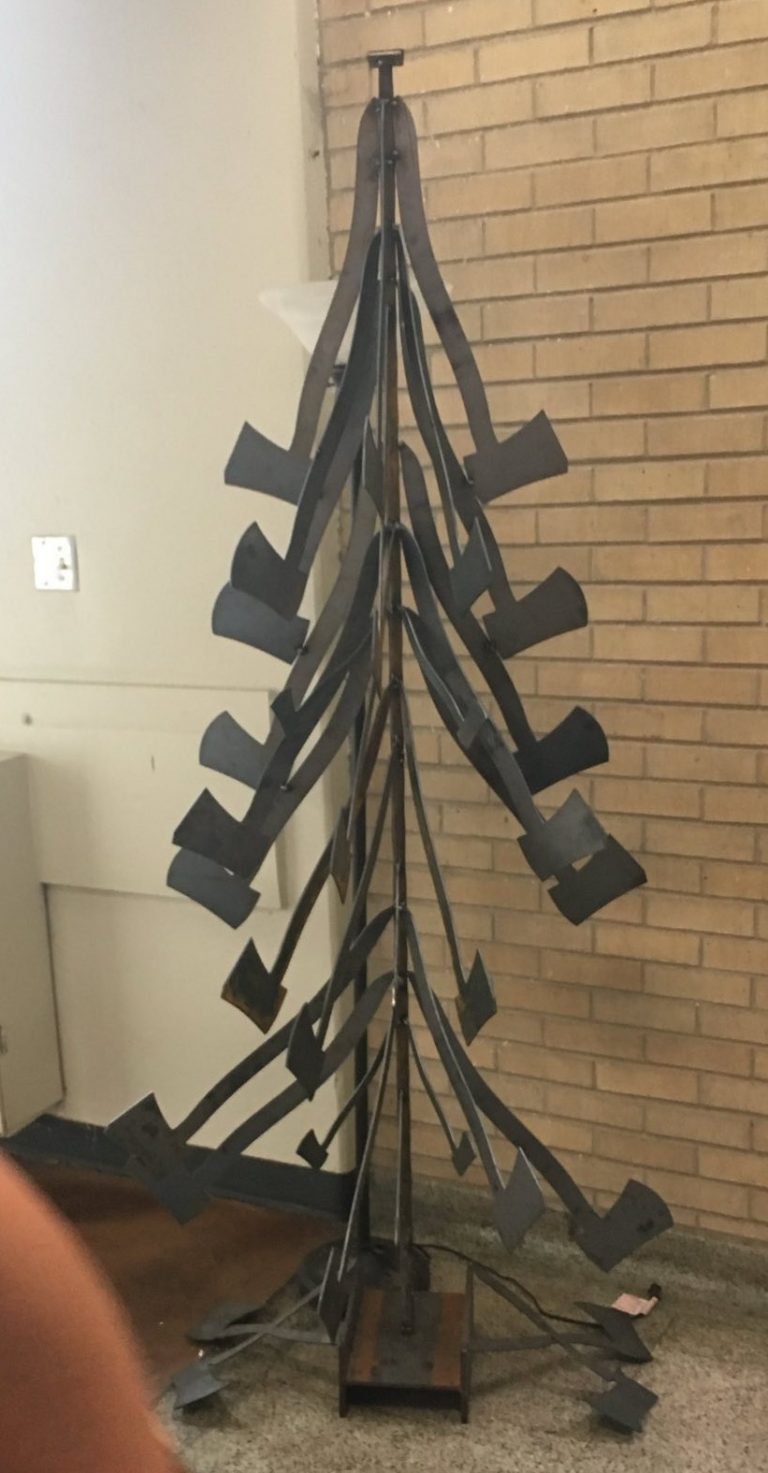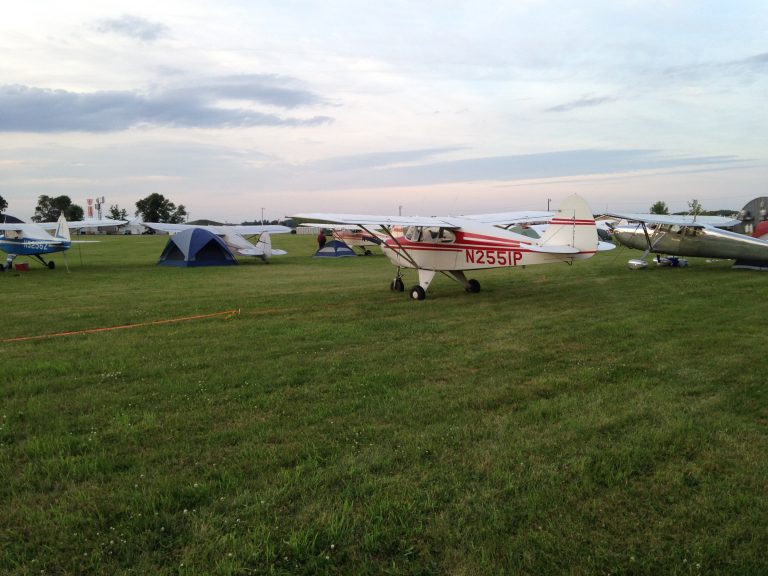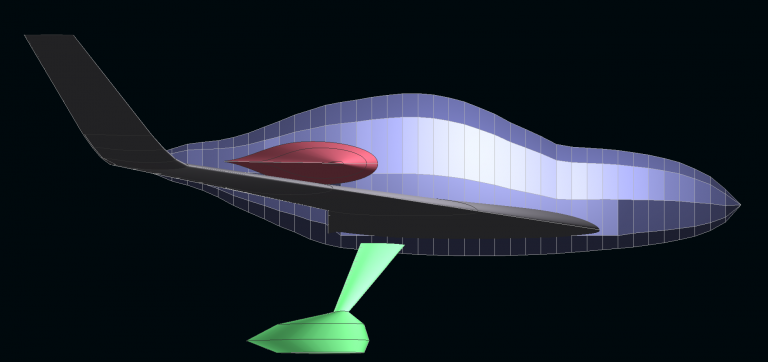The Flight Review with Cap’t Kelly
My palms were covered in sweat.
36 hours after getting my temporary Certified Flight Instructor certificate, I found myself uncharacteristically nervous. I had spent years flying and months preparing for a certificate that would allow me to take disinterested teenagers, the elderly with a dream of flight, and Air Force hopefuls into the air for the first time.
I felt that my instructional skills were in fairly good shape: after years of instructing in the military, teaching aviation ground schools, and lecturing as a university engineering instructor, my ability to translate complex technical concepts to a novice audience seemed well-honed. What I hadn’t counted on until a call the night before was the possibility that my first student would be Cap’t Kelly.
I had known US Air Force Major (retired) turned Continental Airlines Captain Lawrence Kelly “Roomy“ Irving for well over two decades. To say I considered him one of my closest mentors was an understatement. He was one of the first men I would reach out to for advice, militarily or personally.
I had lived in awe of the gentleman for years. A MISTY Forward Air Controller in the Vietnam War, he had been awarded multiple silver stars and a Purple Heart. This last was for surviving the shoot down of his F-100 by a North Vietnamese surface-to-air missile, and escaping on a rescue helicopter out of the jungle. During which, due to an altitude miscalculation by the helicopter crew, he found himself dragged through the rainforest canopy for miles. He liked to joke that he sustained more injuries due to his rescue than from his shootdown. Oh, and then (as his telling of the story went) he got into another jet to complete yet another forward air control sortie on the same day.
His greatest gift, however, was perhaps as an incurable raconteur. He always had a tale, musing, or detailed reflection on constitutional philosophy ready to share – preferably over whisky, often occupying an entire evening.
After further decades as a professional airline pilot, ending as a wide-bodied international Captain, from whence came the honorific “Cap’t” came (with no enunciated middle “T”); I found myself on the phone with Cap’t Kelly asking a simple question “I heard you passed. Congratulations. I need a flight review. Can you do it? I’m free tomorrow.[1]”

The spirit of the flight review
To ensure currency and prevent any dangerous decay in piloting proficiency that may occur from factors such as aging or disuse, the FAA requires all aviators, regardless of experience, licensure, or pedigree, to complete a review of basic proficiency with a flight instructor.
In my opinion, this is a very good thing. The highway traffic fatality rate would probably halve if, every two years, every driver were required to demonstrate that they can check their blind spot and verbally describe a zipper merge. Whereas the highway administration cannot impose such a requirement for drivers, the FAA can: through Title 14, Code of Federal Regulations, Part 61, section 56.
The flight review requirements themselves are actually fairly open. A review must occur every 24 months, and may take the form of a military or airline evaluation. Successfully passing a checkride for most FAA certificates or ratings resets the clock, as does participation in certain aviation safety courses. Most aviators, however, will opt for a flight review with a Certified Flight Instructor (CFI). In this instance, 14 CFR 61.56 really only levies three requirements: 1) The instructor must review the general operating rules of 14 CFR Part 91 – aviation’s rules of the road, 2) The reviewee must complete those flight maneuvers the conducting instructor feels are necessary for safe flight, and 3) each of the ground and flight portions must take at least one hour.[2]
The flight review is impossible to fail, per se. In the event a reviewee cannot demonstrate safe airmanship, the recourse is more time with an instructor until the skill deficit is overcome. If this competence is not regained, the unfortunate aviator will lose their pilot-in-command privileges at the end of the 24th month. Passing a review results in a logbook endorsement, a firm handshake, and a welcome paycheck for the instructor.
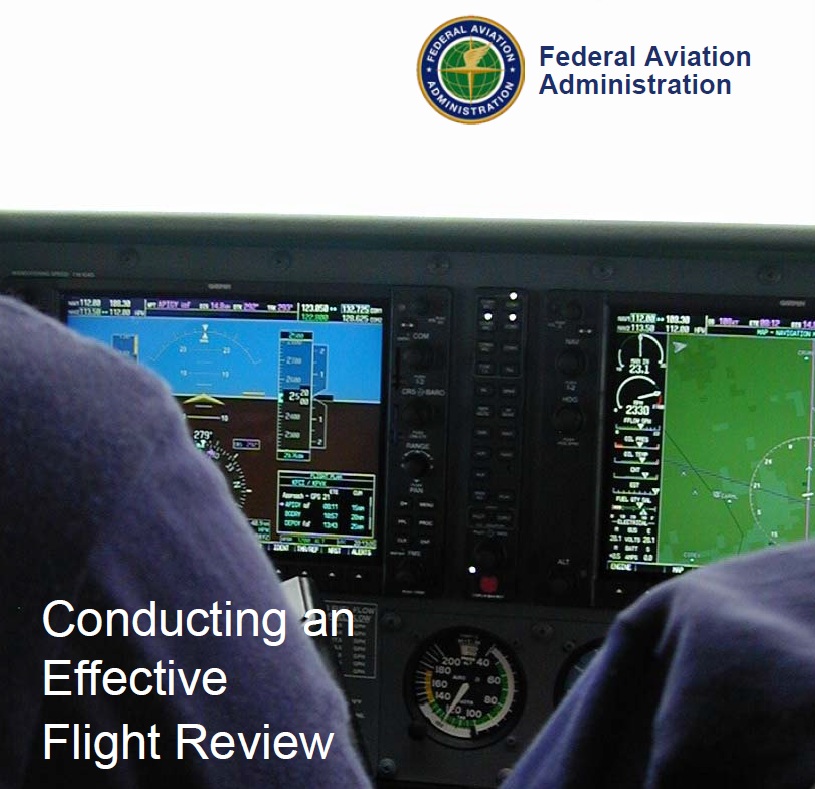
The Flight Review Begins
Finding ourselves out at Meadow Lake Airport – elevation 6875[3], the Part 91 ground instruction I had given so many times before as an advanced ground instructor suddenly fell apart. Thumbing through my well-worn checklist of what the FAA expects from this exchange, I found myself stumbling as Cap’t Kelly hit me back with so many part-121 airline vignettes that I found myself getting absorbed in his observations. “Have you thought about how that works on a trans-Atlantic Flight?” “While on the twin-engine jets we do it that way, but once your number of engines gets to four you really gotta think about it this way.” “Yeah, that’s when you’d use a cat-three approach, but really, here’s where you’d want an alternate airport.”
In hindsight, the warning signs of my instructional failing had already been planted. I found myself overwhelmed and struggling to keep the review on topic, as the one who would be legally signing off on the days of the events. But in hindsight, everything is always clear.
At this point, we broke for breakfast. At Nana’s Kitchen diner, an establishment best known for the open carry of its waitresses and the size of its portions,[4] over a plate of potatoes, we finished the ground portion of our flight review. Most critically, we completed a pre-brief of our intended flight.
The plan for the day was pretty straightforward; we would use a Beechcraft Bonanza with throw-over controls, usual for the type. In these airplanes, the yoke swings on a central pivot, allowing it to be positioned on either the pilot’s or instructor’s side, but not both simultaneously. Directional control on the ground is through nosewheel steering, controlled by the rudder pedals, with deceleration and sharp turns effected through differential brakes. Limiting ground controllability, only the pilot position has brake pedals, though both sides have access to rudder pedals.
We would leave after a normal takeoff, go to a low-traffic practice area, and do some performance maneuvers. Aircraft control would be assessed through slow flight, aerodynamic stalls, and steep turns at a moderate altitude. Then, descending to a lower altitude, we would perform some commercial ground reference maneuvers such as lazy-eights.
Returning to the airport, a closed traffic pattern would end in a balked landing and go-around, followed by a series of performance takeoffs and landings. Each of these last would be to a full stop with a taxi back, as high density altitude made touch-and-go landings questionable. On this last point, Cap’t Kelly enthusiastically agreed.
Deference to Authority
The history of crew resource management (CRM), as the textbooks tell it, goes back to the early days of military operations research. The same texts mention that the managerial observations that have formed the basis of CRM have been drawn from and applied to areas as diverse as operating rooms, nuclear power plants, and railroad operations centers. Steely-eyed missile men, from the first days there were steely-eyed missile men, brought their brand of olive-oil-smooth, checklist-driven crew operations to the bumbling masses.
The truth is, CRM really started as a field of serious endeavor when microphones were introduced into cockpits, and accident investigators recoiled in horror at what they heard.
It turns out, behind the mirror sunglasses, the steely-eyed missile men, the Sky God Pan Am Captains, and the PhD-wielding nuclear plant operators were just as bumbling in their crew interactions as the masses. Effective Crew Resource Management, while fairly straightforward on the surface, requires behaviors that do not come naturally to those whose life trajectory puts them on rocket pads, in cockpits, or managing fission.
Among the things the crash investigators were most horrified to hear were how many times a crew member was fully aware of an impending disaster but either failed to reiterate the point more forcefully or was dismissed out of hand by a superior – a phenomena the CRM theorists soon named Deference to Authority. Pan Am, for example, attributed its high accident rate in the Pacific Ocean to perennially bad weather, hard-to-fly NDB approaches that utilized crude ground-based navigation aids, and tricky island terrain. Cockpit recordings in the 1970’s revealed that almost universally, the “Sky God” Pan Am Captains kindly (or not so kindly) requested that their First Officers and Flight Engineers keep their opinions to themselves. For their part, these crew-members did – moments before collision with terrain.
As an extreme example, in the Tenerife Disaster, which remains the worst accidental aircraft collision, in terms of loss of life, in world history, two fully loaded Boeing 747’s collided on the runway in the Canary Islands. Recordings from the cockpits suggested that at least one crew member in both aircraft, as well as the controlling tower, suspected the other aircraft of being at risk of collision. Both Captains ignored these concerns. Numerous crew members deferred to the aithority of their captains.
As industrial psychologists in the 1980s and beyond began analyzing this phenomenon, they found that a key to understanding these CRM failures was the concept of Authority Gradient. In shallow authority gradient cultures, the lower members of a decision-making hierarchy have relatively high control compared to the higher members – something like an idealized Hellenic Democracy. In steep authority gradient cultures, the lower members hold almost no decision-making authority – think classical Soviet autocracy.[5]
With this in mind, the Airline stipulated that crew members use only their first names. The powerplant operators and surgeons added “all to say yes, one to say no” consensus rules, and everyone underwent a lot of CRM training. The 21st-century operations research academics, blessedly deprived of wreckage-charred tape recordings to analyze, shifted their focus to cultural drivers of CRM failure, with entire books written about how East Asian and Western European cultures are more likely to default into high authority gradients, defer to authority, and how this explains these cultures continuing to be the major source of charred tape recordings for the academics.[6]
What’s curious about my flight review with Cap’t Kelly is that from the outside, none of these factors would seem to exist. We had had a 20+ year personal relationship that definitely allowed for direct communication. We both hailed from professional backgrounds, engineering and military aviation respectively, that prized sharing bad news quickly and listening with care to those who shared it. Historically, Cap’t Kelly had always been quick to accept my advice on technical matters and had treated me as his equal when bird hunting or at the gun range.
In the Air
The flight began uneventfully enough. A textbook takeoff led to an uneventful flight to the maneuver area. Having the sky to ourselves, the first slow flight demos were smooth, and aside from a bit of drift with the rudder pedals,[7] the first power-on stall was typical for that aircraft. All of Cap’t Kelly’s flying was flawless as the performance maneuvers progressed one after another.
The crisp skills of the old military aviator and the professional airline transport pilot had not gone away, even though Cap’t Kelly was now well into his late 70s, and by his own admission hadn’t really flown in over a year. No matter what I gave him, he could fly it within a couple of degrees of compass heading, and with his airspeed and his altitude always within one needle’s width of whatever I called out to him. Everything was fantastic.
We re-entered the traffic pattern for Runway 15 at Meadow Lake, flying an uneventful left-hand pattern that provided him with a clear view of the runway and windsocks. I called out his airspeed and power settings, which he precisely attained, as he turned crisply onto final for runway 15. With the airplane on a stabilized final, I said, “OK, let’s see that go around. Don’t worry about the prop first; you can get it later. Go full mixture, full RPM, full throttle, and then we’ll catch up the RPM.”
Cap’t Kelly turned to me with a big smile on his face and said, “No, I think I’ve got this one.” Turing his head back, he slid the Bonanza into a flawless flare, touching near the fixed-distance markers as he pulled the yoke full back into his lap and started applying the brakes.
At this point, everything went off the rails.
The airplane darted hard left, heading straight towards the pavement edge, the runway lights, and the drainage swale beyond. In a panic, I shouted out, “I have the flight controls!”, raising my hands for a yoke that wasn’t there, and knowing full well the only brakes were on his side. With me applying full right rudder, and Cap’t Kelly applying full left brake, the strain on the nose wheel could be felt. I yanked back the mixture control to shut down the engine, as we rolled past the runway edge lights. Skidding to a stop in the grass next to the runway, we looked at each other as though lightning had struck the airplane, sitting still without saying a word for what felt like an eternity.
On exiting the airplane, the skid mark in the grass indicated that the propeller had missed a runway light by about 18 inches. $50,000 worth of propeller damage and an engine rebuild had come down to an imperceptible shift in rudder pressure and the timing of the engine shutdown, neither of which was within our intentional control. Otherwise, the airplane appeared fine, sans some dirt on the landing gear.
Using an aircraft tug to tow the aircraft back half a mile to a hangar, we debated the possible cause of the brake failure. Had a line ruptured? A leak formed in a caliper? I believed the man who had spent four cumulative years of his life aloft when he swore up and down that he had gotten no response from a brake pedal that had worked flawlessly when we had taxied out an hour before.
At the hangar, and on examination of the cockpit, another tragedy arose. The Hobbs meter, which records time in flight, registered 0.9 hours since we had first taken off. Under the 1-hour regulatory threshold, the Flight Review with Cap’t Kelly had not met the requirements of 14 CFR 61.54. Even if I had wanted to, and a part of me did, I could not legally sign off Kelly to fly again.
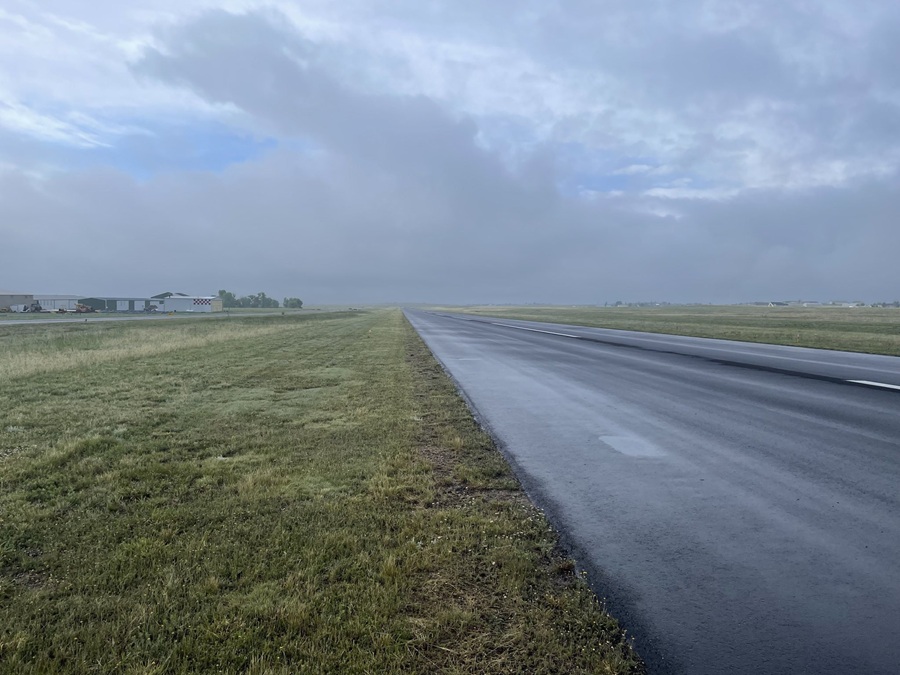
Debrief.
As the incomparable mechanic (and retired aircraft carrier skipper) Bruce Bremner[8] examined the brakes, Cap’t Kelly and I reviewed our flight. We had executed everything that was in our flight plan, sans the go-around. Had the landings been done as touch-and-goes, we may not have encountered this issue on the first or second landing. Had the go-around been executed, we would not have encountered it. None of these would have changed the latent brake issue.
An excellent option, and one not immediately thought of by either of us, would have been to get back into the air. We could have easily diverted to Colorado Springs, declared an emergency, and used the almost three-mile-long runway there to coast to a gentle stop.
My root cause analysis of the near accident was that my situational awareness had become lax. His performance had been so flawless, and the student failings I had been trained to look for so absent, that I lacked the situational awareness to see danger in a disregarded go-around. I had allowed a very shallow Authority Gradient to steepen abruptly, and had not noticed that it had done so until we were in an unplanned maneuver.
Cap’t Kelly did leave me with some CRM advice in the debrief, which I’ll recount in his words, as best as I can recall them:
“It’s ironic the brakes failed. I used to tell my FO’s in the MD-80 ‘you have the most important controls. You have the brakes. If anything doesn’t look right before we leave the gate, step on your brakes, and we’ll talk it through.’”
As we wrapped up, Bruce reported that both brakes were in fine working order. When Cap’t Kelly stumbled stepping over a raised door threshold, the mystery of the brake failure was solved. A piece of his shoe sole had become delaminated and apparently had caught in the brake pedal, preventing it from depressing. It was a bizarre occurrence, and one that would be nearly impossible to replicate.
Epilogue
Cap’t Kelly completed his flight review the next day in a fixed-gear Piper, with full controls on both sides – including brakes. His first pattern was a go-around, which he completed flawlessly. I was honored to sign off on his fight review, marking the first thing to ever bear my CFI endorsement, and I never cashed the check he paid me for my services. It still resides in my safe, tucked inside my “baby pilot” logbook.
Sadly, Cap’t Kelly flew west in the fall of 2020 after a sudden heart attack. I still think of him often and miss him dearly.
I look forward to hearing your thoughts, and be sure to subscribe!
-Jerome
Do you need a flight review, or would you like to see how structured debriefing can help your organization never make the same mistake twice? Crate of Thunder Aerospace Consulting can help!
[1] He actually asked for a “BFR”, or biennial flight review. The name has changed, with “flight review” now being the accepted terminology, but the concept remains the same.
[2] Advisory Circular 61-98 provides more detail on the intent and structure for a Flight Review, though most of the actual proceedings are left to the instructor’s judgment. An entirely advisory companion volume, “Conducting an Effective Flight Review,” provides suggested syllabi, which I’m happy to report are very heavy on risk management content.
[3] Summer density altitude: 30,000ft
[4] I love rural Colorado. I truly do.
[5] For military theorists, this is why NATO has functioning Mission Command. This concept allows a 23-year-old Sergeant, given a set of objectives and some rules of engagement, to be left with a team to independently pursue those objectives in the manner they see most fit. Militaries cut from the Soviet mold cannot wrap their mind around giving a Copenhagen and monster-energy addicted 23-year-old that much firepower or decision-making authority.
[6] My alternate theory: three converging factors work against these aviators. First, lacking a robust general aviation industry to develop early aeronautical decision-making and pilot skills, these aviators must learn with a lot of paying passengers behind them. Second, they almost all do so with an ICAO “Multi-Crew Commercial License,” requiring less than 1/5 the experience or formal training of their North American counterparts, and 3) Many of those who can make it through the state-owned airline gatekeepers to such a qualification are usually doing so on familial connections rather than actual aviation qualification. I guess that last is a bit of a cultural artifact.
[7] a common affliction amongst jet pilots reacquainting with propellers
[8] But that’s a story for another post.
